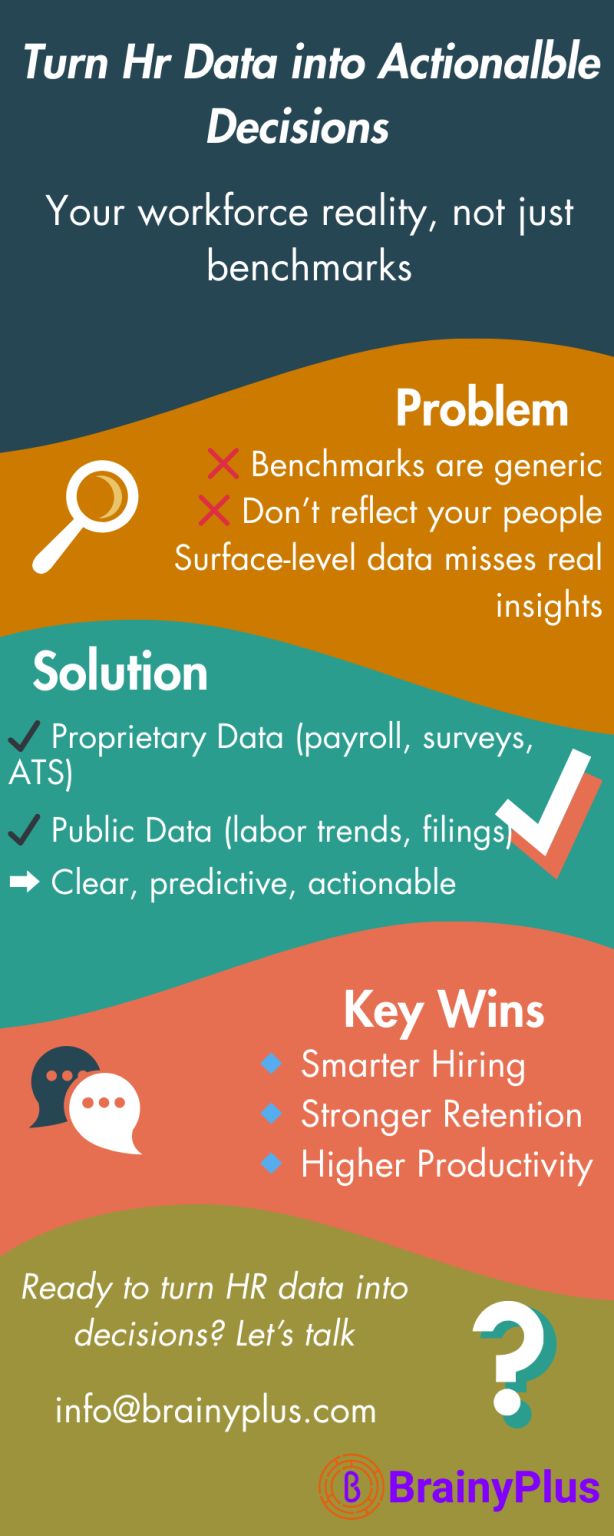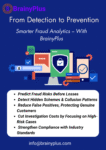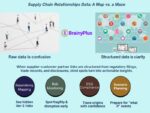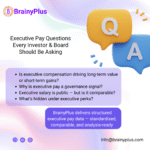
HR is no longer just about policies and payroll-it’s about using data to shape workforce strategy. Yet many organizations still rely on surface-level metrics or generic benchmarks that don’t explain the realities of their own employees.
That’s where structured HR analytics makes the difference. By helping organizations organize and analyze their own HR-related data businesses move beyond reporting “what happened” to understanding why it happened and what to do next.
Why Structured HR Analytics Matters
Strategic alignment–Link attrition, training, and recruitment efficiency to business outcomes.
Better decision-making–Guide hiring, pay, and workforce planning with facts, not assumptions.
Cost visibility–Spot inefficiencies in overtime, recruitment spend, or training.
Risk signals–Detect early turnover, compliance, or skills gaps.
HR credibility–Show HR’s measurable contribution to business results.
Proprietary & Internal Data: The Game-Changer
Public benchmarks help, but they can’t explain your organization’s reality. Proprietary data-employee surveys, reviews, payroll, exit interviews, training usage, ATS pipelines-adds context generic data cannot.
When your internal and public datasets are structured and analyzed, they deliver:
Contextual insights–Attrition makes sense when linked to pay, workload, or manager relationships.
Predictive accuracy–Models built on your workforce history outperform generic ones.
Unique drivers–The factors driving your workforce-career growth, flexibility, incentives-may differ from industry norms.
Strategic linkage–Connect HR outcomes with sales or operations to prove impact.
Use Cases in HR Analytics
Recruitment & Talent Acquisition–Predict candidate success using top-performer traits; optimize sourcing to reduce time-to-hire.
Retention & Engagement–Spot attrition risks early and intervene proactively.
Performance & Productivity–Identify patterns of high-performing teams and replicate success across the organization.
Industries Applying HR Data Intelligence
Technology–Workforce insights to guide hybrid and return-to-office strategies.
Retail–Optimizing staffing and large-scale upskilling.
Healthcare–Aligning staffing models with patient demand.
Finance–Predicting attrition and refining compensation policies.
Manufacturing&Consumer Goods –Improving recruitment efficiency and monitoring workforce morale.
Our Expertise
At BrainyPlus, we work strictly on pre-order projects using:
Publicly available data (open reports, labor market information, public filings)
Proprietary internal HR data (collected directly from your organization)
We clean, structure, and integrate these sources into actionable formats so HR leaders act with clarity and confidence.
Because in HR, as in business, the answers are already in the data-you just need the right partner to unlock them.






